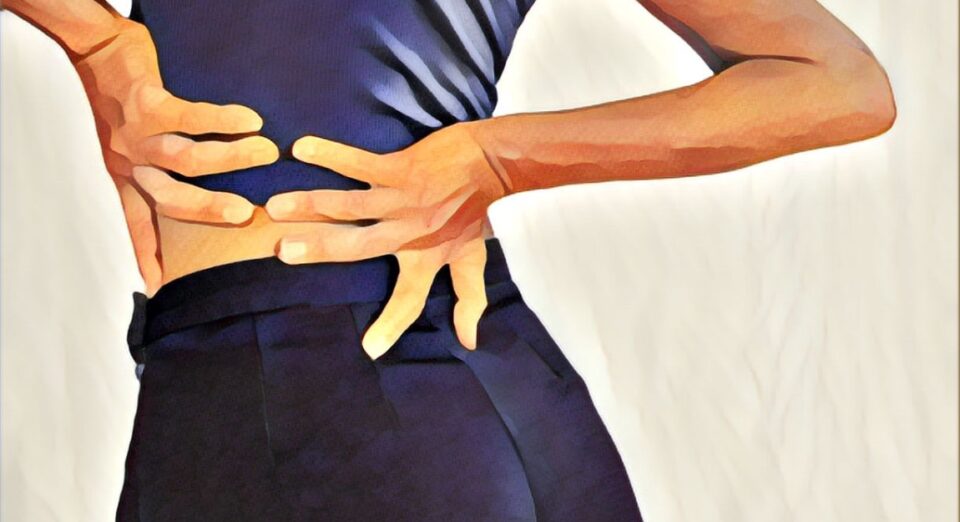Neck and back pain When to see a pain specialist?
Neck and back pain are very common and often resolve with simple measures. However, in certain cases, it is recommended to see a pain specialist.
Call Pain Specialists WA in Perth:

To understand neck and back pain we need to understand the spine
If you experience back and/or neck pain, we will need to take a look at your spine first.
The spine is composed of 33 vertebrae that are stacked on top of each other. You’ve got
- 7 vertebrae in your neck,
- 12 thoracic vertebrae in your upper back,
- 5 lumbar vertebrae in your lower back,
- 5 fused sacral vertebrae,
- and 4 fused coccygeal vertebrae at the base of the spine.
The vertebrae are held together by ligaments, muscles, discs, and small joints called facet joints and they all allow for movement between your vertebrae. The spine also has a network of blood vessels that supply nutrients and oxygen to the spinal cord and surrounding tissues.
There are many nerves that run through the spine, branching off from the spinal cord and extending to different parts of the body. These nerves are responsible for transmitting sensory information, such as pain or temperature. They also transmit motor impulses that control muscle movement and other bodily functions.
In summary, the spine supports your body, protects your spinal cord, and allows for movement and flexibility.
Types of neck and back pain

There are many reasons why you can get pain in your spine.
Muscle spasm and sprain, wear and tear (degenerative changes) in the facet joints and the discs, ligament related pain like in whiplash or sport injury, disc fissure, inflammation in the disc, osteoporotic fractures, and infection are some of the causes of pain in the spine.
Unfortunately, there are times that despite a thorough examination and advanced investigations, we may not be able to find a cause for neck and back pain!
Most of the time, pain in the spine, settles down by itself. If the pain doesn’t get better, you should seek medical advice from your practitioner who would assess you initially and would suggest you the appropriate course of action.
If your pain continues after three months despite your doctor’s recommendations, a pain specialist can assess you and help with your recovery with various strategies to get you back on track.
Sacroiliac joints are located in the lower back region near the buttock. This joint is not mobile as such but can cause pain in your lower back.
Inflammation, arthritis, trauma, pregnancy are some of the causes of sacroiliac joint pain.
It requires a thorough examination and sometimes utilising diagnostic injections to confirm the diagnosis.
Once sacroiliac joint related pain is confirmed, a pain specialist can guide you with variety of very effective treatments.
Your tailbone or coccyx is the bottom segment of the spine. It has small bones often fused together and sits between the buttock area. A painful tailbone is called coccydynia and this condition can occur due to prolonged sitting, trauma, childbirth or sometimes without a clear reason. Hypermobile tailbone, a condition in which the tailbone is very mobile or moves too much, can be another cause of the pain you experience.
A specific injection called ganglion impar block sometimes can alleviate the symptoms. This injection is done by a pain specialist.
Acute onset pain in the spine often settles down using simple measures, such as a heat or cold pack, using a TENS machine, a short course of rest, physiotherapy and/or over-the-counter painkillers. These treatments can be initiated by your general practitioner without needing a review by a pain specialist.
However, if the pain is not resolving despite the recommendations by your general practitioner within 3 months, it is recommended to see a pain specialist.
Other reasons to consult with a pain specialist for neck and back pain are:
- You require ongoing use of painkillers,
- You have to increase the dose of painkillers
- Your level of pain is preventing you to return to work or function normally
- Your level of pain interferes with your sleep or mood
Neck and back pain diagnosis and treatment

Diagnosis
At Pain Specialists WA we use a combination of methods to diagnose neck and back pain.
First, we perform a comprehensive assessment. This includes:
- Medical history. This part can take a bit longer as biomedical and psychosocial aspects of your condition need to be evaluated.
- Physical examination. Assessing your range of motion, muscle strength and any signs of tenderness in the affected area.
- Requesting imaging tests and reviewing the results.
Then, combining the information gathered from the assessment, we make a diagnosis and propose a treatment plan to help with your condition.
Treatment
The suggested treatment plan varies depending on your circumstances.
A pain specialist can suggest a variety of treatment options, including:
- Optimisation of medications
- Identifying suitable allied health services for your condition
- Pain interventional techniques and injections such as:
- Cortisone injection
- Rhizotomy (other names are neurotomy, ablation, and denervation)
- Nerve root sleeve injection
- Epidural
- Peripheral nerve block
- Injection into the joints such as sacroiliac joint
- Facet joint injection
- Ganglion impar block
Sometimes it is not possible to achieve complete pain relief, especially in cases of chronic pain. If that’s the case, we aim to manage and reduce your pain, enhance functionality and improve your quality of life.
Pain Specialists WA for neck and back pain
Pain Specialists WA in Perth is a pain management clinic located in Nedlands and Murdoch. Consultations are available at Hollywood Medical Centre in Nedlands and at Wexford Medical Centre in Murdoch.
Call Pain Specialists WA in Perth or request an appointment online.
